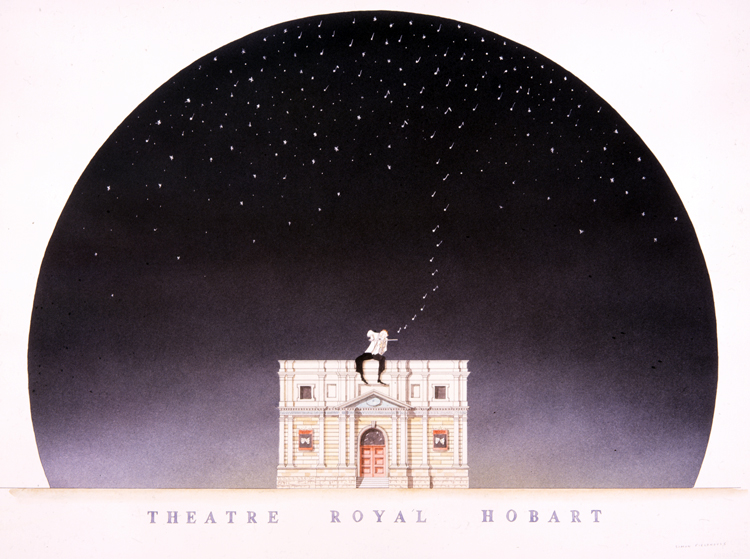
Theatre Royal Hobart
Theatre Royal Hobart: An Architectural Gem and Cultural Beacon.Theatre Royal in Hobart, Tasmania, stands as a testament to the enduring legacy of theater in the heart of Australia's southernmost capital city. With its rich architectural history and cultural significance, it serves as an essential cultural institution that has brought stories, emotions, and entertainment to the people of Hobart for over 180 years.
Architectural Beauty:
Theatre Royal's architectural charm is immediately evident to anyone who approaches it. Designed by prominent architect and artist John Lee Archer, the theater was built in 1834, making it Australia's oldest continually operating theater. Its neoclassical design showcases the elegance and sophistication of the Georgian era, with its graceful colonnades, decorative façade, and elegant proportions.
The theater's interior is equally captivating, with its rich red and gold color scheme, ornate plasterwork, and tiered seating that ensures an intimate and immersive experience for every audience member. The chandeliers, designed to recreate the light of the gas lamps that originally lit the theater, add a touch of historic nostalgia. The enduring architectural features of the Theatre Royal Hobart provide a unique and immersive experience for theatergoers, transporting them to a bygone era while enjoying contemporary performances.
Cultural Significance:
Beyond its architectural beauty, Theatre Royal Hobart has played a pivotal role in shaping the cultural identity of Tasmania. It has hosted a wide range of performances, including Shakespearean classics, operas, ballets, musicals, and contemporary dramas. This diversity of programming has not only entertained but also educated, enlightened, and challenged the people of Hobart. It has encouraged artistic growth, nurtured local talent, and contributed significantly to the cultural enrichment of the region.
Theatre Royal has been a hub of cultural exchange, fostering a sense of community among the residents of Hobart. It has been a place where people from different backgrounds and walks of life can come together, share in the joys of live performances, and appreciate the arts as a powerful means of communication and expression. Its significance extends beyond the stage, as it has served as a venue for civic events, political rallies, and even wartime activities.
Theatre Royal Hobart has also been an important platform for showcasing indigenous Australian talent, contributing to the recognition and preservation of the cultural heritage of the Tasmanian Aboriginal people. By hosting performances that reflect the stories, traditions, and artistry of the First Nations, the theater has played a role in fostering reconciliation and understanding.
Conclusion:
The Theatre Royal Hobart stands as a cherished cultural institution, a testament to architectural beauty, and a symbol of artistic excellence. Its historical and cultural significance reaches far beyond its walls. As it continues to evolve and adapt, it will undoubtedly remain a beacon of culture, creativity, and community for the people of Hobart, Tasmania, and beyond. In an ever-changing world, the Theatre Royal remains a timeless and vital fixture in the cultural landscape of Australia's southernmost capital city.
- Sarah Bernhardt: The legendary French actress Sarah Bernhardt, often regarded as one of the greatest actors of all time, performed at the Theatre Royal Hobart during her Australian tour in 1884.
- Laurence Olivier: Sir Laurence Olivier, a renowned British actor and director, performed in a production of Shakespeare's "Richard III" at the Theatre Royal in the mid-1940s.
- Dame Nellie Melba: The world-famous Australian operatic soprano Dame Nellie Melba, who was one of the most celebrated singers of her time, gave a performance at the Theatre Royal Hobart.
- Joan Sutherland: Another celebrated Australian operatic soprano, Dame Joan Sutherland, performed at the Theatre Royal and left a lasting impact on the audiences with her incredible vocal talent.
- David Suchet: The renowned British actor David Suchet, best known for his portrayal of Agatha Christie's detective Hercule Poirot, has performed in various theatrical productions at the Theatre Royal.
- John Bell: John Bell, one of Australia's most respected actors and theater directors, has graced the stage of Theatre Royal in various productions, including Shakespearean plays.
- Barry Humphries: The legendary Australian comedian and satirist Barry Humphries, famous for his character Dame Edna Everage, has also performed at the Theatre Royal.
- Circus Oz: This Australian contemporary circus troupe has brought its unique and innovative circus performances to the Theatre Royal, captivating audiences with their acrobatics and humor.
- Bell Shakespeare Company: The Bell Shakespeare Company, led by renowned actor and director John Bell, has presented numerous Shakespearean plays at the Theatre Royal, showcasing the enduring appeal of the Bard's works.
- Local and National Talent: The Theatre Royal has consistently provided a platform for local and national talent, including actors, musicians, dancers, and performers from various genres, contributing to the development and promotion of Australian arts and culture.
These are just a few examples of the many famous and talented individuals and groups who have graced the stage of the Theatre Royal Hobart over the years. The theater's diverse programming and commitment to showcasing exceptional talent have made it a cultural landmark with a rich history of performances from across the spectrum of the arts.